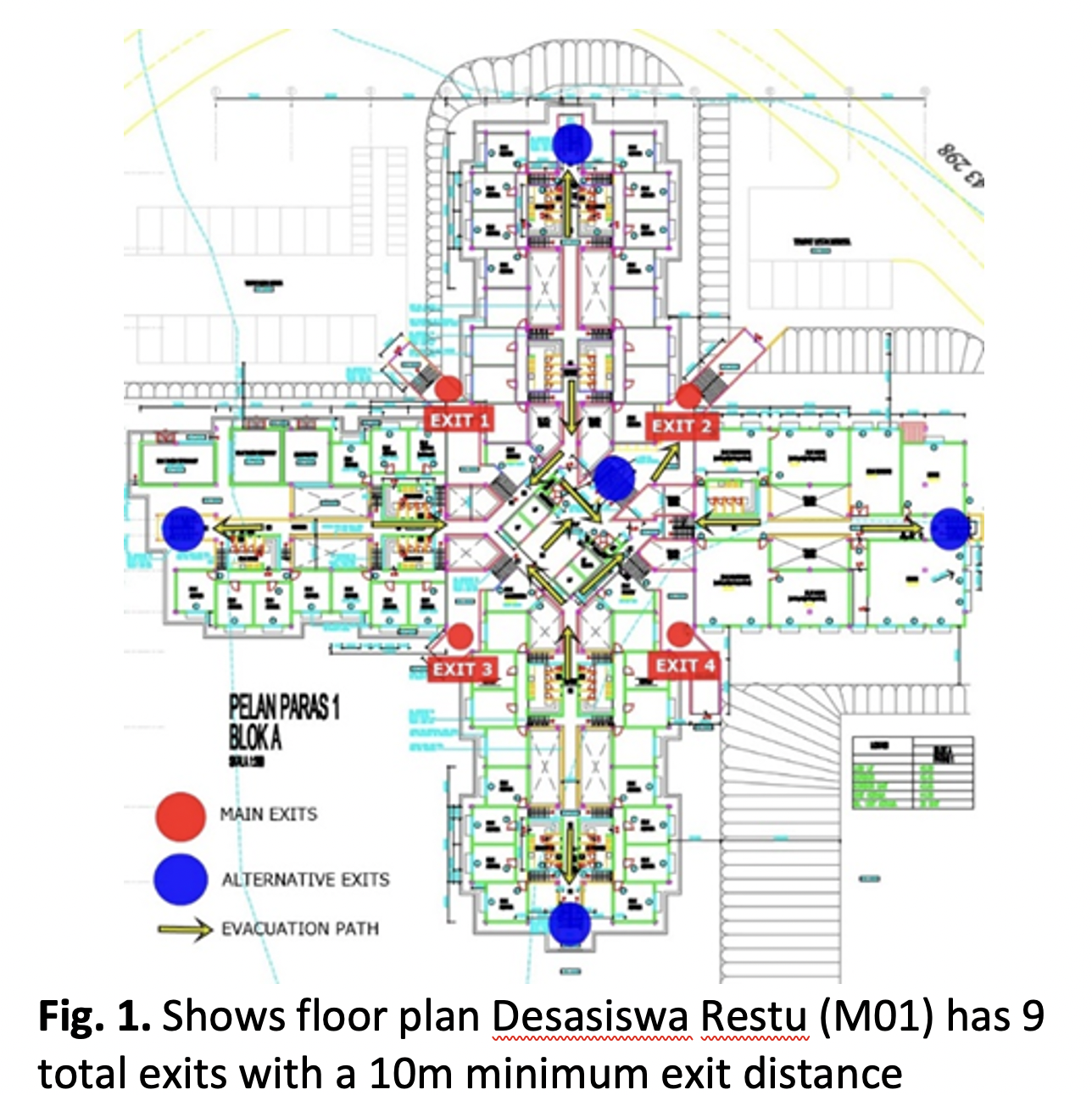Functionality of Building Design Related to Means of Escape (MoE) in Student Housing at Public Universities, as Required By-Law and Other Fire Codes
DOI:
https://doi.org/10.37934/araset.28.3.105122Keywords:
Means of Escape (MoE), design criteria, rules and regulations, mobility of occupants, fire safety standardsAbstract
One of the most serious problems facing student housing at public universities is fire hazards. The fire risk is significantly increased by some works that may be performed in the facilities and laboratories. The primary concern with any fire is to save lives. In the worst case, they lose consciousness, making them vulnerable to mistakes. The building should be designed to help the occupants in this situation. The passive fire protection system in the building should be always accessible and work well because it is permanent and is usually used frequently until the occupants are familiar with it. Occupants should be able to use the Means of Escape (MoE) design elements in the building to escape the fire even if the active fire protection system is not working or the fire department arrives too late at the scene. Therefore, this research was conducted to determine the functionality of Means of Escape (MoE) in building design and their effectiveness in allowing all occupants of student housing in public universities to escape during evacuation. The functionality of Means of Escape (MoE) in building design and their effectiveness for student housing in public universities is of great importance because they can reduce fire accidents, property damage, and loss of life. The methods used were observation, review of legal requirements and other fire safety-related rules and regulations. In addition, the research was also based on pilot testing of the questionnaire. In the case of compliance and design consideration, performance is evaluated by examining whether the elements meet the requirements of the regulations, while in the case of occupant findings, performance is evaluated based on the difficulty and complexity of the complaints and their solutions. In conclusion, the authorities and public universities need to work together to implement an adequate fire safety system in student housing in public universities.
Downloads





























